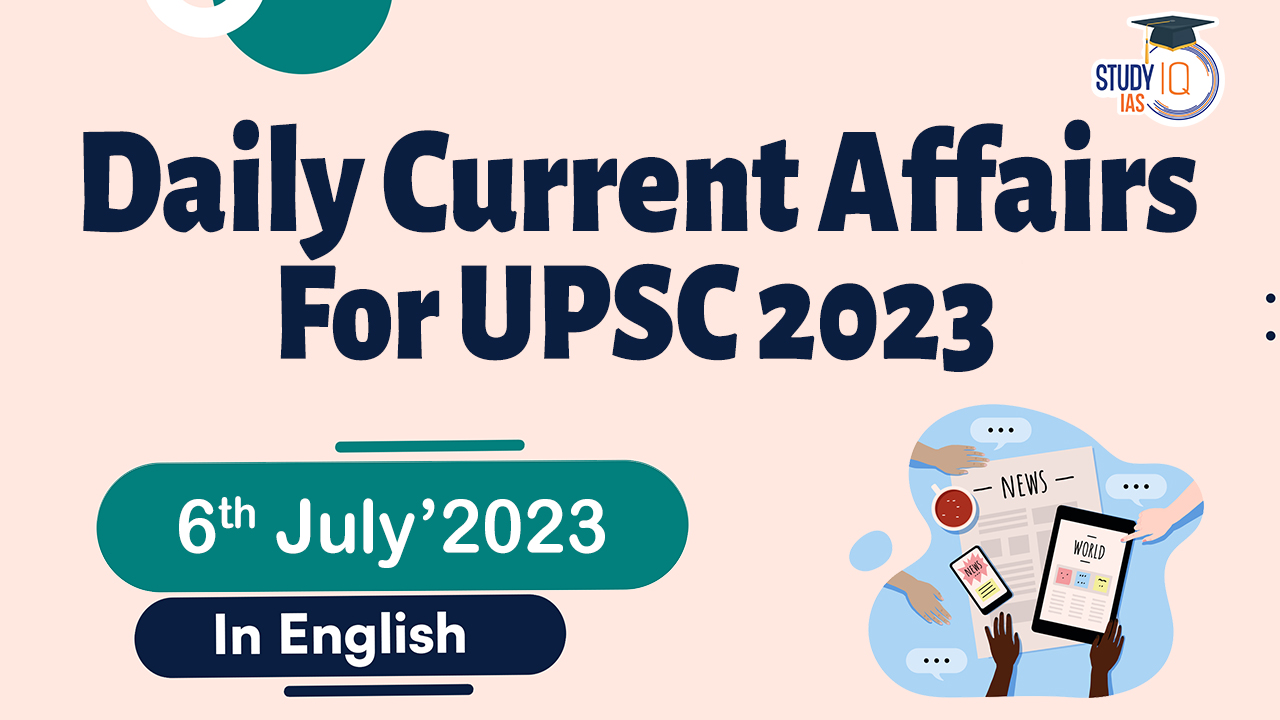Daily Current Affairs for UPSC 2023
Q) Which one of the following statements is not correct about International Court of Justice (ICJ)?
- It can entertain legal disputes between States.
- Its judgments in contentious cases are binding on the parties.
- The Court is composed of ten judges elected for five years
- A candidate is elected by absolute majority of the votes.
Daily Current Affairs for UPSC – 5 July April 2023
Explanation:
- Option (1) is correct: The International Court of Justice, also known as the World Court, is the main judicial organ of the UN. It was established in June 1945 by the Charter of the United Nations and began work in April 1946. The Court may entertain two types of cases: legal disputes between States submitted to it by them (contentious cases) and requests for advisory opinions on legal questions referred to it by United Nations organs and specialized agencies (advisory proceedings).
- Option (2) is correct: The sources of law that the Court must apply are: international treaties and conventions in force; international custom; the general principles of law; judicial decisions; and the teachings of the most highly qualified publicists. The court’s judgments in contentious cases are final and binding on the parties to a case and without appeal. Unlike the Court’s judgments, advisory opinions are not binding.
- Option (3) is incorrect but option (4) is correct: The Court is composed of 15 judges, who are elected for terms of office of nine years by the United Nations General Assembly (UNGA) and the Security Council (UNSC). It is assisted by a Registry, its administrative organ. The seat of the Court is at the Peace Palace in The Hague (Netherlands). Of the six principal organs of the United Nations, it is the only one not located in New York (United States of America). Its official languages are English and French. To be elected, a candidate must receive an absolute majority of the votes in UNGA and UNSC. One third of the Court is elected every three years.
Q) Consider the following statements about Internationalization of a currency:
- It can help in reducing the exchange rate volatility of a currency.
- At present full Capital Account Convertibility is allowed in India.
- This process allows non-residents to freely hold financial assets in rupee.
How many of the statements given above is/are correct?
- Only one
- Only two
- All three
- None
Explanation:
- Statement 1 is correct: Increased international usage of a currency can potentially reduce the exchange rate volatility by increasing demand for the currency, which can make it more stable and predictable. Exchange rate volatility is defined as the risk associated with unexpected movements in the exchange rate. It can reduce vulnerability to external shocks because of reduced dependence on foreign currency.
- Statement 2 is incorrect but Statement 3 is correct: Internationalization of a currency (rupee here) is a process to increase rupee acceptance (credibility) across the world through activities such as:
- Increased use for invoicing and settlement of cross-border transactions
- Freedom for non-residents to hold financial assets/liabilities in rupee
- Freedom for non-residents to tradable balances in rupee at offshore locations
- It can also be referred to adopting full capital account convertibility, i.e., freedom to convert local financial assets into foreign financial assets and vice versa.
Currently, India allows partial Capital Account Convertibility and full current account convertibility. The Tarapore Committee on Fuller Capital Account Convertibility (CFAC) defined international currency as ‘a currency that is widely used for international transactions.
Q) With reference to Nuclear Energy, consider the following statements:
- The process of nuclear fusion is used to produce energy in nuclear reactors.
- The Atomic Energy Regulatory Board is the nodal agency in India in respect of manmade radiological emergencies.
- The Zaporizhzhia Nuclear Power Plant is located on the banks of the Danube River.
How many of the statements given above is/are correct?
- Only one
- Only two
- All three
- None
Explanation:
- Statement 1 is incorrect: Nuclear energy is a type of energy that is generated by the process of nuclear reactions- either nuclear fission or nuclear fusion. The energy released during these reactions can be harnessed and used to produce electricity, heat, or other forms of energy. Nuclear fission is a process in which the nucleus of an atom is split into two or more smaller nuclei, releasing a large amount of energy in the process. This process is used in nuclear power plants to generate electricity.
- Statement 2 is incorrect: The Department of Atomic Energy (DAE) is the nodal agency in the country in respect of manmade radiological emergencies in the public domain. The Atomic Energy Regulatory Board is the nuclear regulatory authority in India which, as per the legal framework of Atomic Energy Act, 1962, has the mandate for issuance of licenses to nuclear and radiation facilities upon ensuring compliance with the applicable standards and codes.
- It develops safety policies in nuclear, radiological and industrial safety areas.
- It grants consent for siting, constructing, commissioning and decommissioning after appropriate safety review and assessment, for the nuclear and radiological facilities.
- It develops safety codes, guides and standards for siting, designing, construction, commissioning, operation and decommissioning of different types of nuclear and radiological facilities.
- It reviews the emergency preparedness plans for nuclear and radiological facilities and transportation of large radioactive sources, irradiated fuel and fissile material.
- It takes such steps as necessary to keep the public informed of major issues of radiological safety significance.
- Statement 3 is incorrect: Zaporizhzhia Nuclear Power Plant in southeastern Ukraine is the largest nuclear power plant in Europe and among the 10 largest in the world. It is located on the banks of the Dnieper River, which is the longest river of Ukraine and Belarus and the fourth-longest river in Europe, after the Volga, Danube, and Ural rivers.
Q) Consider the following statements about the collegium system:
- It is the system provided by the Constitution of India for appointing Supreme Court judges.
- A High Court collegium is led by the Chief Justice and four senior-most judges of that court.
- The Collegium recommends the candidate to the President for the final appointment.
How many of the statements given above is/are correct?
- Only one
- Only two
- All three
- None
Explanation:
- Statement 1 is incorrect but statement 2 is correct: The Collegium system in India also called “Judges- selecting- Judges”, is an internal mechanism of the judiciary, where the judges are appointed and transferred only by the judges. The system has evolved by means of the judgments of the Supreme Court, and not by an Act of Parliament or by a Constitutional provision. The Supreme Court Collegium is headed by the Chief Justice of India and comprises 4 other senior-most judges of the SC. A High Court collegium is headed by its Chief Justice and 4 other senior-most judges of that court.
- Statement 3 is incorrect: The Collegium recommends the candidate to the Law Minister, who forwards it to the Prime Minister who then advises the President for the final appointment. President appoints Chief Justice of High Courts in consultation with CJI (consults other SC collegium members) and governor of the respective state. The candidate is selected from outside the respective state.
Q) With reference to Smart Bandage, consider the following statements:
- It is made of a stretchable polymer which has biosensors in it.
- They can also accelerate healing process in chronic non-healing wounds.
Which of the statements given above is/are correct?
- 1 only
- 2 only
- Both 1 and 2
- Neither 1 nor 2
Explanation:
- Statement 1 is correct: A study published in Science Advances mentions about “smart bandage” to heal wounds. The device is assembled on a soft, stretchable polymer that helps the bandage maintain contact with and stick to the skin. The bioelectronic system consists of biosensors that monitor biomarkers in the wound exudate. Exudate is fluid that leaks out of blood vessels into nearby tissues. Data collected by the bandage is passed to a flexible printed circuit board, which relays it wirelessly to a smartphone or tablet for review by a physician. A pair of electrodes control drug release from a hydrogel layer as well as stimulate the wound to encourage tissue regrowth.
- Statement 2 is correct: Chronic non-healing wounds affect tens of millions of people around the world and cause a staggering financial burden on the health care system. Smart Bandage can accelerate healing in such cases as it can deliver drugs while monitoring the healing status and transmitting data to a smartphone. Cleaning and dressing the wound increases chances of bacterial contamination every time the wound is opened but smart bandage does not need to be changed continuously. Moreover, the bandage could also reduce the number of hospital visits.


 Air Pollution in India, Causes, Effects,...
Air Pollution in India, Causes, Effects,...
 Daily Quiz 03 April 2025
Daily Quiz 03 April 2025
 List of National Symbols of India with N...
List of National Symbols of India with N...





















